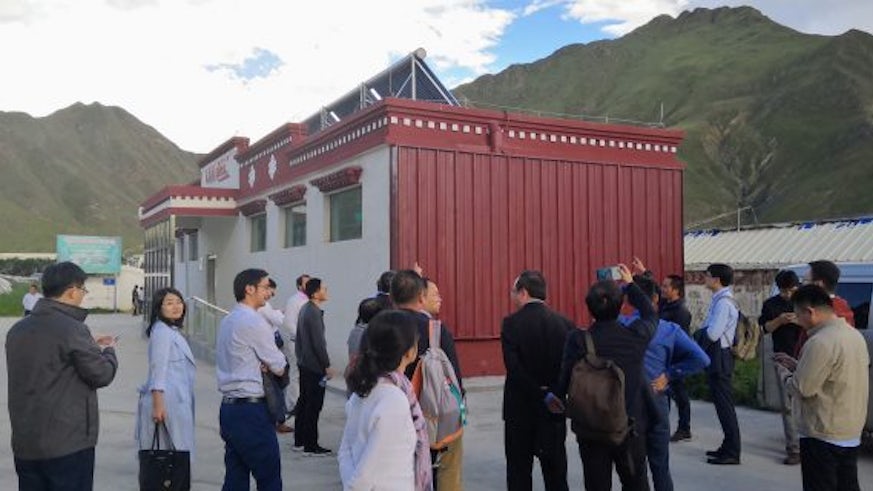Sustainable architecture for Tibet
10 September 2018

Cardiff University researchers have completed an energy-harvesting façade and roof retrofit in Tibet as part of its HABITAT Global Challenge Research project.
The Tibetan Plateau, also known as ‘The Roof of the World’, is nearly two-thirds the size of Europe and has an average elevation of 4,900 metres, making it the largest and highest plateau on Earth. Intense solar radiation, low oxygen content, low air pressure, and low temperature in winter make labour-intensive building work extremely difficult on the plateau.
Dr Hu Du, Principal Investigator from Cardiff University, explains: “Tibet has a fragile ecological environment. There is an urgent need to form novel energy systems for buildings that suit Tibet’s geographical conditions.”
In order to meet this need, research teams from the Welsh School of Architecture and Xi’an University of Architecture and Technology worked together to design and retrofit a public toilet facility in the plateau’s second largest city of Lhasa. The retrofit took a total of 3 weeks and was completed in August 2018; it aims to achieve zero energy bills in the long term.
By utilising a solar-heated hot air ventilation system, the retrofit has significantly improved indoor air quality and thermal comfort. Cold air is heated through the solar collectors on the west façade and the roof of the building and delivered to the rooms as required. The surplus heat is stored in the phase-changing material inside the solar collectors for night-time heating. Photovoltaics panels and batteries power the lights, hand dryers, ultraviolet disinfection units and fans for ventilation. The ecological and economical building, located in Lhasa’s Pureland Industry Park, is visited over 400 times a day by residents and tourists.
This seed corn project demonstrates that global research and knowledge-sharing has the capacity to improve the living conditions of people in extreme climates, to help tackle fuel poverty, and to reduce carbon emissions through cost-free solar energy. Dr Hu Du, Principal Investigator from Cardiff University, adds: “The HABITAT project demonstrates the potential to use affordable and clean building façade energy systems in Tibet, China.”
The project was part-funded by the Higher Education Funding Council for Wales through Cardiff University Global Challenge Research Fund.